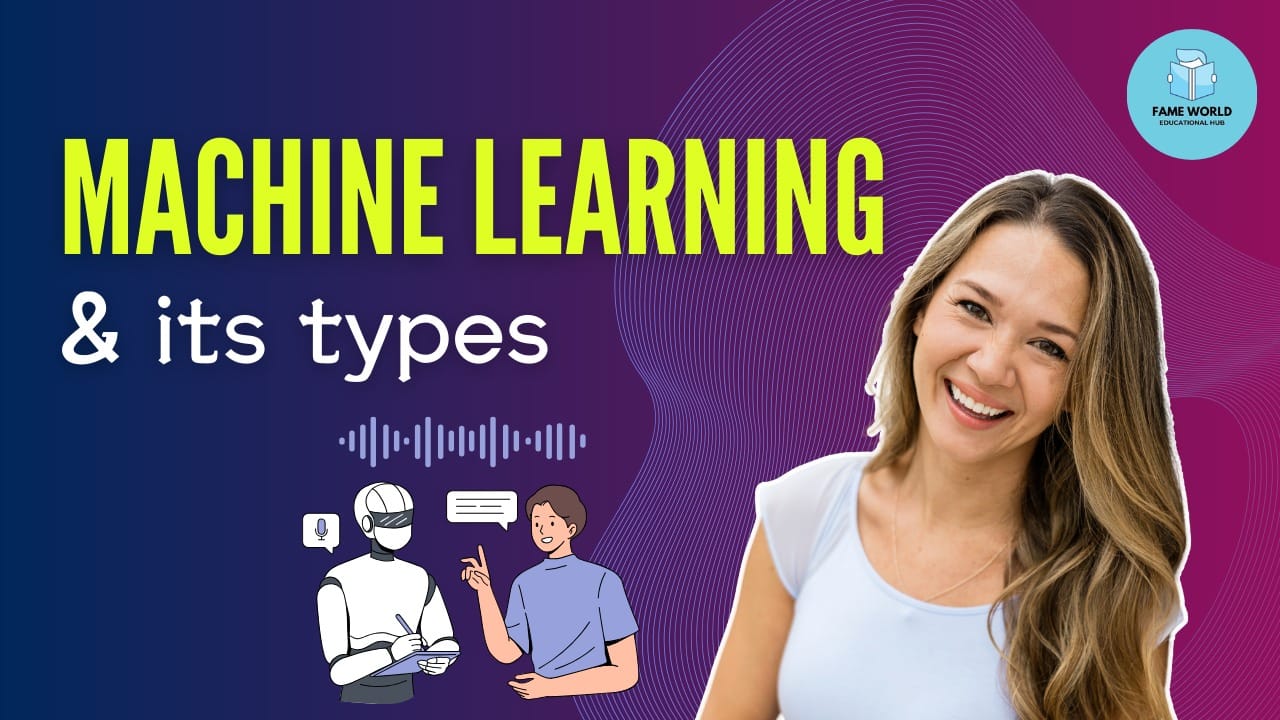Machine learning (ML) is one of the most transformative technologies of our time, enabling systems to learn from data and improve their performance without being explicitly programmed. It’s the driving force behind advancements in artificial intelligence (AI), impacting industries like healthcare, finance, retail, and more.
This blog post will introduce you to the concept of machine learning, its importance, and its various types. Additionally, don’t miss out on watching the following video to gain a deeper understanding:
Click here to watch the video and explore more about Machine Learning.
What is Machine Learning?
Machine learning is a subset of AI focused on creating algorithms that allow computers to identify patterns and make decisions based on data. The essence of ML lies in its ability to adapt and improve over time, enabling predictive analytics, automation, and intelligent solutions.
Why is Machine Learning Important?
1. Data-Driven Insights
ML algorithms analyze vast datasets to uncover patterns, trends, and actionable insights that would be impossible for humans to process manually.
2. Enhanced Decision-Making
From fraud detection to recommendation systems, ML aids in making faster, more accurate, and informed decisions.
3. Efficiency and Automation
Machine learning streamlines workflows by automating repetitive tasks, freeing up resources for strategic work.
4. Real-World Applications
- Healthcare: Disease prediction and drug discovery.
- Finance: Risk assessment and algorithmic trading.
- Retail: Personalization and inventory management.
Types of Machine Learning
ML can be broadly categorized into four types:
1. Supervised Learning
In supervised learning, algorithms are trained on labeled data. Each input comes with an associated output, and the model learns to map inputs to outputs.
Applications:
- Email spam filtering
- Fraud detection
- House price prediction
Examples:
- Linear Regression
- Decision Trees
- Support Vector Machines (SVM)
2. Unsupervised Learning
Unsupervised learning deals with unlabeled data. The algorithm identifies patterns and structures within the data without predefined outputs.
Applications:
- Customer segmentation
- Anomaly detection
- Market basket analysis
Examples:
- K-Means Clustering
- Principal Component Analysis (PCA)
- Autoencoders
3. Semi-Supervised Learning
Semi-supervised learning uses a small amount of labeled data and a large amount of unlabeled data. It combines the strengths of supervised and unsupervised learning.
Applications:
- Medical imaging (where labeled data is scarce)
- Text classification
Examples:
- Graph-based models
- Self-training algorithms
4. Reinforcement Learning (RL)
In reinforcement learning, an agent learns to make decisions by interacting with an environment and receiving feedback in the form of rewards or penalties.
Applications:
- Robotics
- Gaming (e.g., AlphaGo)
- Autonomous vehicles
Examples:
- Q-Learning
- Deep Q-Networks (DQN)
- Policy Gradient Methods
How Machine Learning Works
- Data Collection: Gathering relevant and high-quality data.
- Data Preprocessing: Cleaning and preparing the data for analysis.
- Model Building: Selecting the right algorithm and training the model.
- Evaluation: Testing the model to ensure accuracy and reliability.
- Deployment: Using the model in real-world scenarios.
- Monitoring: Continuously assessing the model’s performance and making improvements.
Challenges in Machine Learning
- Data Quality: Poor data quality can lead to inaccurate predictions.
- Bias and Fairness: Ensuring unbiased models is crucial.
- Overfitting and Underfitting: Balancing model complexity and generalization.
- Scalability: Handling large datasets and computational requirements.
Conclusion
Machine learning is shaping the future of technology, offering innovative solutions across industries. Understanding its types—supervised, unsupervised, semi-supervised, and reinforcement learning—provides a foundation for exploring its vast potential.
To dive deeper into machine learning concepts, don’t forget to watch the video linked below for a visual and practical explanation:
👉 Watch the Video on Machine Learning and Its Types Now! – Link
Stay tuned for more insights, and feel free to share your thoughts or questions in the comments!
Additional learning resources:
PYTHON Q&A SERIES – Link
IOT TUTORIAL SERIES – Link
PYTHON PROGRAMMING TUTORIAL SERIES – Link
CAREER TIPS – Link
CLOUD COMPUTING – Link
MERN FULL STACK WEB DEVELOPMENT – Link
DJANGO SERIES – Link
DIGITAL MARKETING – Link
C LANGUAGE – Link
CODING INTERVIEW PREPRATION – Link
NEW AI TOOLS – Link
PYTHONISTA FOR PYTHON LOVERS – Link
ARTIFICIAL INTELLIGENCE – Link
MACHINE LEARNING USING PYTHON – Link
DBMS – Link
PYTHON PROGRAMMING QUIZ SERIES – Link
BLOCKCHAIN TECHNOLOGY TUTORIAL SERIES – Link
NETWORKING QUIZ SERIES – Link
CYBER SECURITY Q&A SERIES – Link
PROGRAMMING RELATED STUFF – Link



